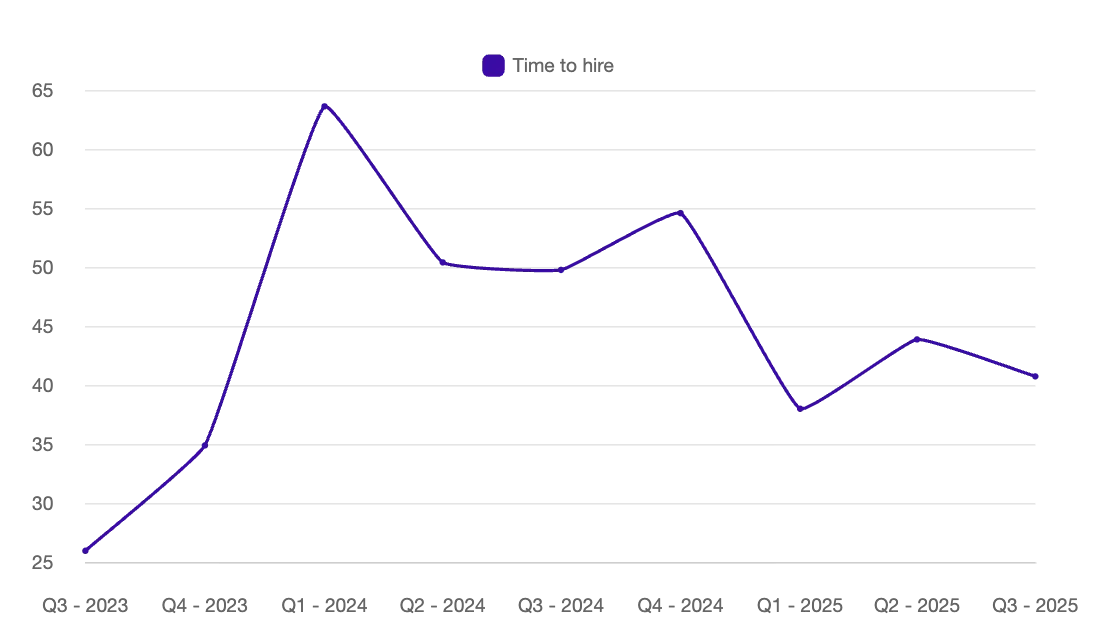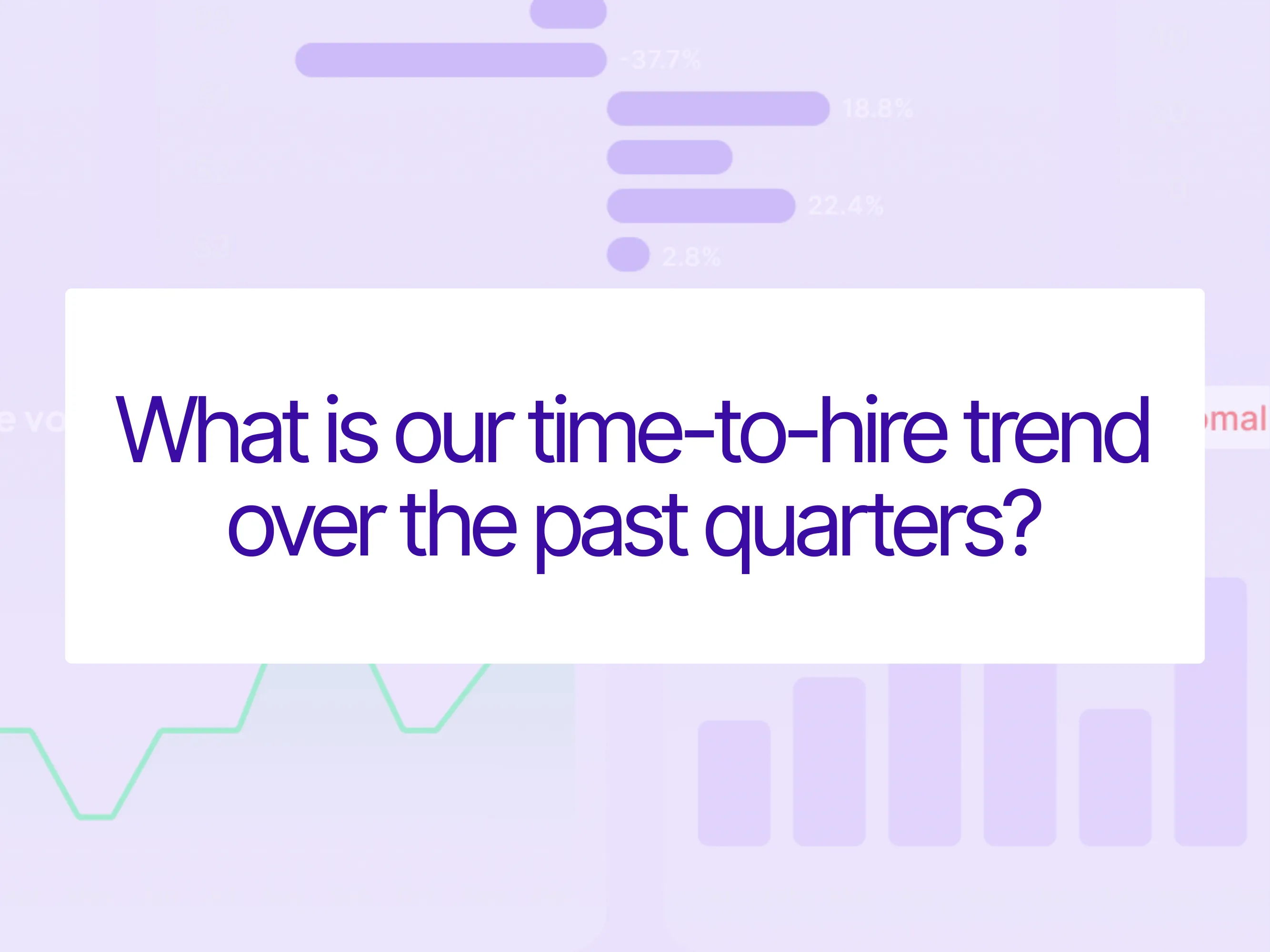Average Time-to-Hire — How efficient is your hiring funnel?
How long does it really take to fill an open role? This analysis shows how your time-to-hire evolves over the quarter and where delays occur. It helps you identify which steps in the process are costing time and where there's room for improvement. With these insights, you can not only accelerate the recruiting process but also enhance the candidate experience.
What does the analysis of time-to-hire development over the last few quarters mean?
This analysis shows how long the recruiting process takes on average — from tendering to hiring — and how this key figure has developed over the last few quarters.
It provides valuable information on process efficiency, bottlenecks and optimization potential in recruiting.
Why that's important:
- Understanding process speed: Changes in time-to-hire show whether recruiting processes are getting faster or slower.
- Identify bottlenecks: Longer periods of time in certain phases indicate a need for optimization.
- Improve recruiting performance: Data-based insights help to prioritize measures to hire talent faster and more efficiently.



The average time-to-hire (time from application to hiring) has developed as follows over the last few quarters:
• Q3 2023: 26 days
• Q4 2023: approx. 35 days
• Q1 2024: approx. 64 days (significant increase)
• Q2 2024: approx. 50 days
• Q3 2024: approx. 50 days
• Q4 2024: approx. 55 days
• Q1 2025: approx. 38 days
• Q2 2025: approx. 44 days
• Q3 2025: approx. 41 days
Analyse:
• Time-to-hire rose sharply at the beginning of 2024 and was significantly above the previous quarter.
• Since then, the figure has fallen and stabilized again, but remains above the 2023 level.
• A clear outlier is Q1 2024, where a detailed analysis by position or recruiting channel is worthwhile.
Recommendation:
The development shows that processes have recently become somewhat more efficient, but are not yet back to the old level. It is advisable to investigate the reasons for the increase at the beginning of 2024 (e.g. bottlenecks, process changes, seasonal effects).

.webp)






